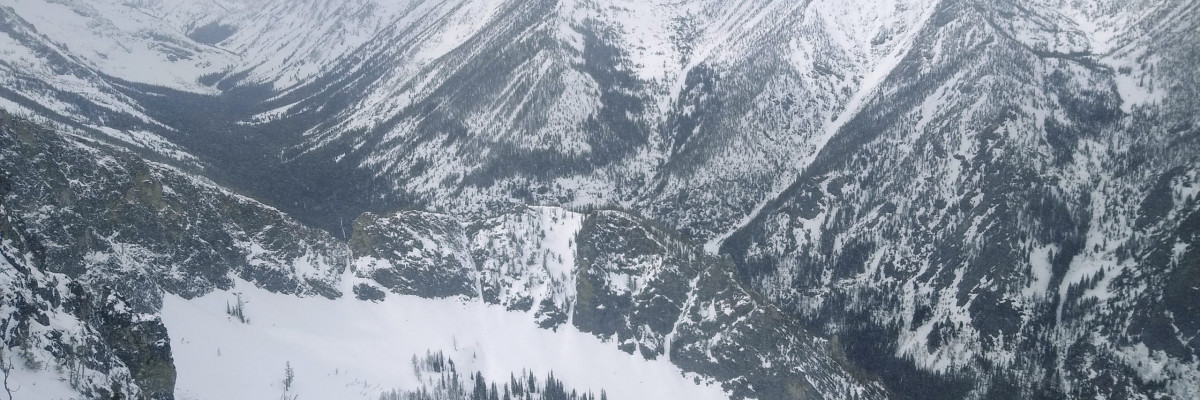With new snow overnight and more on the way, human triggered avalanches are likely and the avalanche danger is rated CONSIDERABLE today in West Central Montana.
Good morning, this is Andrew Schauer with the final West Central Montana avalanche advisory for the season on Tuesday, March 31, 2020. Today’s advisory is sponsored by all of you who made donations and participated in our fundraising events this season. Thank you all, this operation would not be possible without your support. This advisory does not apply to operating ski areas, expires at midnight tonight, and is the sole responsibility of the U.S. Forest Service.
Weather and Snowpack
Winter is still hanging on in West Central Montana. As of 5 am, we have received 8” of new snow in the Bitterroot equaling .6” snow water equivalent (SWE). Storm totals are lower in the Rattlesnake and Seeley Lake areas, with 4” of new snow equaling .4” SWE. Winds are 12-20 mph out of the west, with gusts to 38 mph. Mountain temperatures are in the mid- to upper 20’s F this morning, and will rise to the mid- 30’s during the day. Snow continues today, with another 5-8” expected in Bitterroot and 4-6″ in the Rattlesnake and near Seeley Lake by tomorrow morning. Winds will blow 15-20 mph out of the southwest with gusts in the high 40’s. Light snowfall will continue through tomorrow.
With nearly a foot of new snow in the past 24 hours, and more on the way, it will be easy for a person to trigger storm slab avalanches up to 12” deep throughout the advisory area today. These will propagate the widest on northerly aspects that developed weak snow at the surface over the past two weeks. We have received reports of avalanches failing at this interface over the past few days at Gash Point (photo, details) as well as the Rattlesnake (details).
Moderate winds are drifting snow into sensitive wind slabs up to 2 feet deep. A fresh wind slab will be more dense than unaffected storm snow, and will usually fail in a stability test. Be on the lookout for clear indicators of these avalanches like shooting cracks and recent avalanche activity. If you are noticing these clear signs of instability, choose low-angle terrain.
Dry loose avalanches will be likely in steep terrain on all aspects today. While it is unlikely that these avalanches will be big enough to bury somebody, they can have serious consequences in dangerous terrain. Avoid exposure to terrain traps like cliffs and gullies today, and be aware that these avalanches will run far and fast on slopes that had developed crusts prior to the storm.
The Bottom Line
Today is not the day to push it into steep terrain. While all of this new snow will dramatically improve riding conditions across the advisory area, it will also make it very easy to trigger an avalanche big enough to bury you. Be thorough in your snowpack assessment, and pay attention to clear signs of instability like recent avalanches and shooting cracks. Be conservative with your terrain choices today, and give the snowpack a few days to adjust to the new snow once the storm passes.
We will continue posting observations periodically throughout the spring. If you get out, please take a minute to fill out the observation form on our website (missoulaavalanche.org), or shoot us a quick email at [email protected].
Please take a moment to read this message from Missoula Avalanche, Greater than the Sum of Our Parts.














